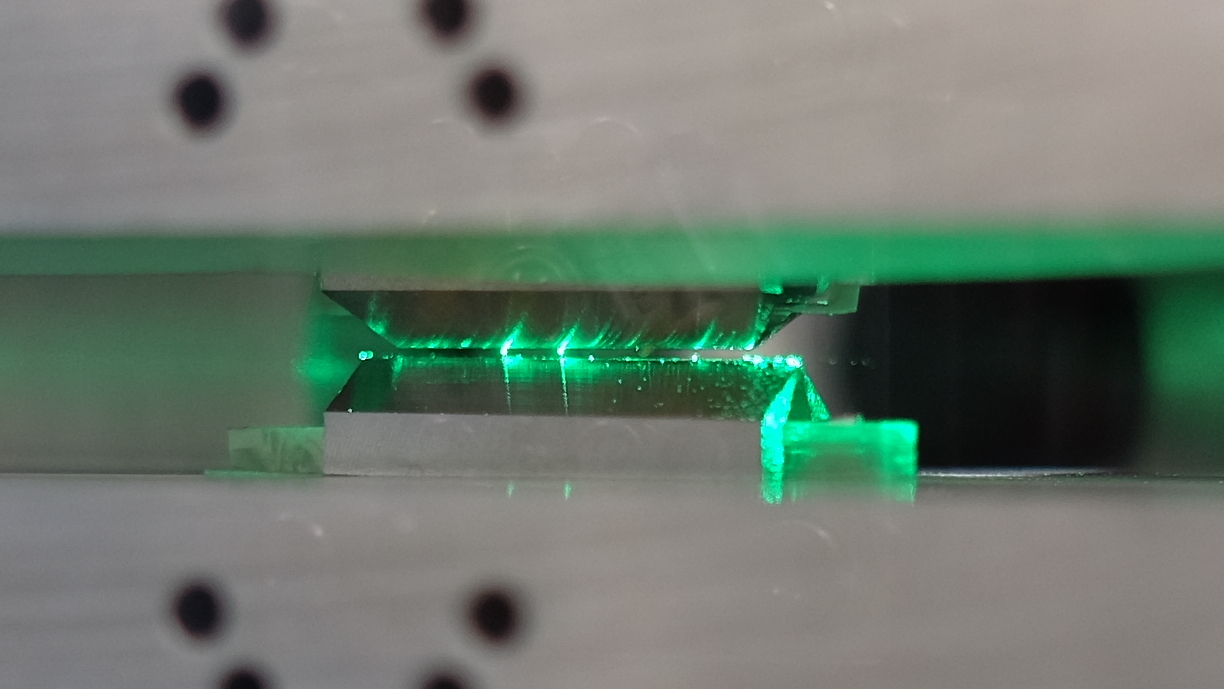Brian D'Urso
"High-Sensitivity Accelerometry with a Feedback-Cooled Magnetically Levitated Microsphere"
https://journals.aps.org/prapplied/abstract/10.1103/PhysRevApplied.15.014050https://www.nature.com/articles/s41467-018-04531-y
(Open access)
A mechanical simple harmonic oscillator, such as a mass on a spring, is the basis
for many common accelerometer designs. With movement of the environment well below
the resonance frequency of the system, the oscillator mass stays largely still while
the environment shakes back and forth. At higher frequencies the mass moves as well,
but the relative motion of the mass and environment can still be used to sense the
motion of the environment.
We used this basic design to make an accelerometer, where the harmoic oscillator is
a micrometer-scale glass sphere levitated in high vacuum. Th eshpere is held in a
magneto-gravitational trap that uses a strong magnetic field gradient and the repulsion
of diamagnetic materials by magnetic fields to contain the microsphere in two dimensions,
while the Earth's gravity helps to trap the sphere in the third dimension. To minimize
the effect of thermal motion on the measurement, the motion of the sphere is continuously
monitored and slowed down or "cooled" by applying a force to the particle which opposes
the motion; this feedback force results from teh radiation pressure of an amplitude-modulated
laser scattered off the sphere. Remarkably, the response of our microscale accelerometer
was nerly identical to that of a convential accelerometer, which uses a test mass
that is billions of times larger. The sensitivity is the result of the miniscule residual
damping of the motion of the sphere under vaccum and the extreme position sensitivity
of the detector.
This result was a step along the path to the ultimate goal of the experiment: a new
measurement of the Newtonian constant of gravitation, G.

